The 11 Best High Nitrogen Fertilizers for your Garden – Naturally!

This post follows our research editorial guidelines.

Nourishing a flourishing garden requires a perfect ratio of nitrogen in the ground. That vital element is the foundation of all plant growth, so it pays to learn how your favorite fertilizer works. The different types of high-nitrogen fertilizers all bring their unique properties, too.
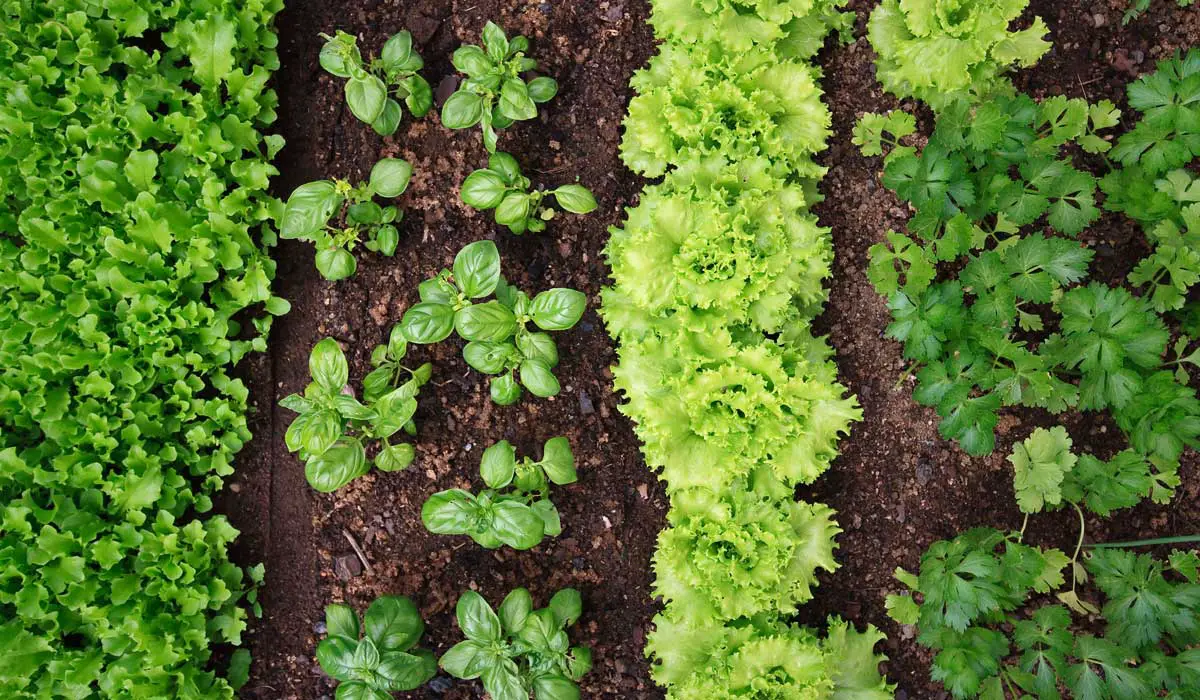
While you might need a low-nitrogen fertilizer from time to time, far more often we need one with the power to keep leaves, blooms, and fruit coming!
Table of Contents
What Natural Fertilizers are High In Nitrogen?
Types of nitrogen fertilizer sourced from animal by-products are highest in nitrogen. Meals made from blood, feathers or hoof and horn provide lasting slow-release fertility. Plant sources like cotton seeds or soy also provide good results
Why Use a Natural Nitrogen Rich Fertilizer?
“All plants in your garden or landscape need a source of nitrogen in the soil. Nitrogen is used by plants for photosynthesis (the process of converting light energy into chemical energy), growth, reproduction.”
Jeff Schalau, County Director, Arizona Cooperative Extension Service
No matter how much high-nitrogen fertilizer you dump on your garden, in time it will all be gone. Plants use it in photosynthesis, root development and reproduction. As a result, they lock nitrogen in their tissues. It’s also highly soluble, readily leaching from the soil in rainwater or other forms of irrigation. Last of all, soil microbes break down and release nitrogen in the soil as a gas. This process is known as denitrification.
You do need to be careful when adding nitrogen sources to your garden. Too much produces weak growth, yellow leaves and deformed foliage or fruit. It’s also possible to burn plants with high concentrations of nitrogen, especially from synthetic fertilizers.
Powerful fertilizers containing urea or mineral nitrates have nitrogen levels almost perfectly calibrated to damage your garden rather than help it. Mineral nitrate fertilizer contains 28 percent nitrogen depending on the brand, and urea fertilizer can hit a colossal 46 percent!
It’s far safer for your plants to stick with organic fertilizer options like those listed below. In general, the faster the rate of release the more likely a fertilizer is to cause burns if used imprudently.
I also recommend testing your soil before application. Most university extension services offer excellent soil testing services, but you can also buy economical home soil test kits. It’ll help you identify if you actually have a nitrogen deficiency and possibly save you a few bucks in the long run. Once you have a firm idea of what level of nitrogen and other nutrients are already in soil you can top up what’s only needed.
11 of the Best High Nitrogen Fertilizers
| % Nitrogen | % Phosphorus | % Potassium (K) | Burning Potential | Rate of Release | |
| Hoof and Horn Meal | 12-14 | 1.5-2 | 0 | Moderate | Slow |
| Feather Meal | 7-12 | 0 | 0 | Low | Slow |
| Blood Meal | 12 | 0 | 0 | High | Rapid |
| Bat Guano | 10 | 3 | 1 | High | Rapid to Moderate |
| Cotton Seed Meal | 5-7 | 2 | 1-2 | Low | Slow to Moderate |
| Soybean Meal | 7 | 2 | 1 | Low | Slow |
| Fish Emulsion | 2-5 | 2-4 | 1-2 | High | Rapid |
| Neem Seed Meal | 2-5 | 0.5-1 | 1-2 | Low | Moderate |
| Crab Meal | 4 | 3 | 0 | Low | Moderate |
| Manure | 0.5 to 6.5 | 0.2 to 6 | 0 to 3 | Variable | Moderate to rapid |
| Compost | 1.3 to 3 | 0.5 to 1 | 1 to 2 | Variable | Slow |
Sources: University of Colorado; Utah State University
What plants need high nitrogen fertilizer?
All plants need nitrogen to thrive, but some get through more than others. Any part of your garden where foliage is cut off and taken away will need more nitrogen than established plants left to their own devices. Consider applying a high nitrogen content fertilizer to these plants:
Lawns
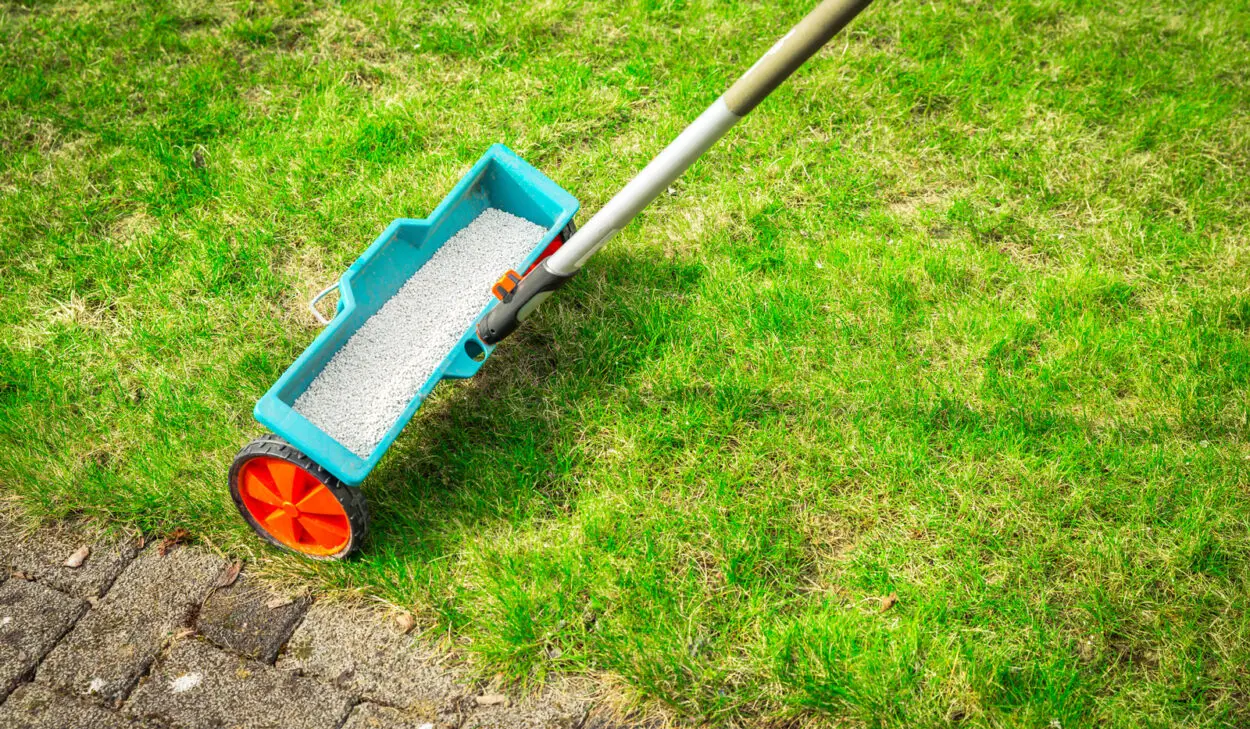
Luscious grass growth is fueled by nitrogen. Every time you mow, you’re removing it. To maintain green grass you’ll need to put all that nitrogen back into the soil. As a result, many lawn enthusiasts douse their turf with chemical fertilizers loaded with synthetic quick-release nitrogen.
Ironically it’s easy to overdose and wind up with yellow grass in your garden identical to nitrogen-deficient turf instead of the smooth lawn of your dreams. Most lawns only want a rich lawn fertilizer once or twice a year. The rest of the time a nitrogen-rich lawn food that’s low in other nutrients will keep a green lawn its perfect shade of emerald.
Leafy Greens
Much like mowing a lawn, snipping off lush heads of lettuce from your vegetable garden or salad table results in less nitrogen in the bed. If the season is good these fast growers chew through the reserves and soon run out. For greens like lettuce, kale and swiss chard, I like liquid fertilizers that are high in micro-nutrients, like fish emulsions or guano. They provide nutrients in a form that won’t cause nitrogen burns.
Heavy Feeding Fruits and Vegetables
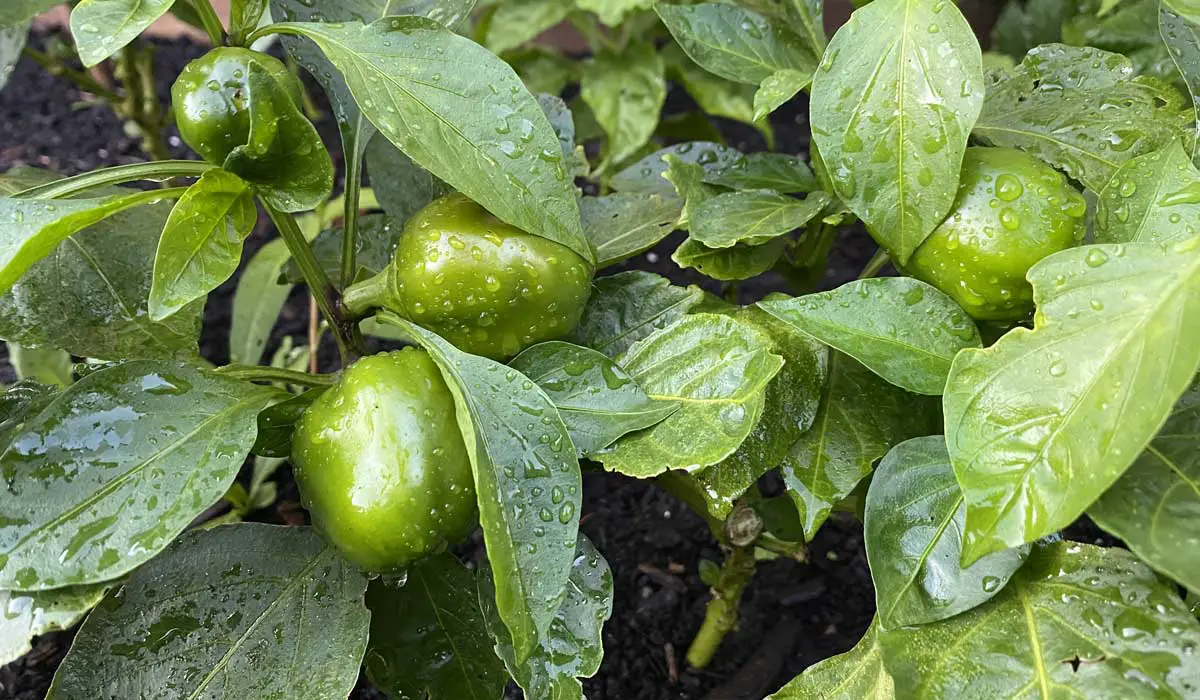
Applying a slow-release granular fertilizer to heavy feeders like nightshades (tomatoes, peppers or eggplants) or brassicas (broccoli, cabbage, kale) will get trace nutrients to the soil over the season while providing plenty of nitrogen critical to your harvest. I like to side dress with a good quality organic high-nitrogen fertilizer that will provide good nutrition through the season. This drops the need to reapply fertilizer to every month or so, rather than every week. Mix the fertilizer into the bed for even more enduring results.
1. Hoof & Horn Meal
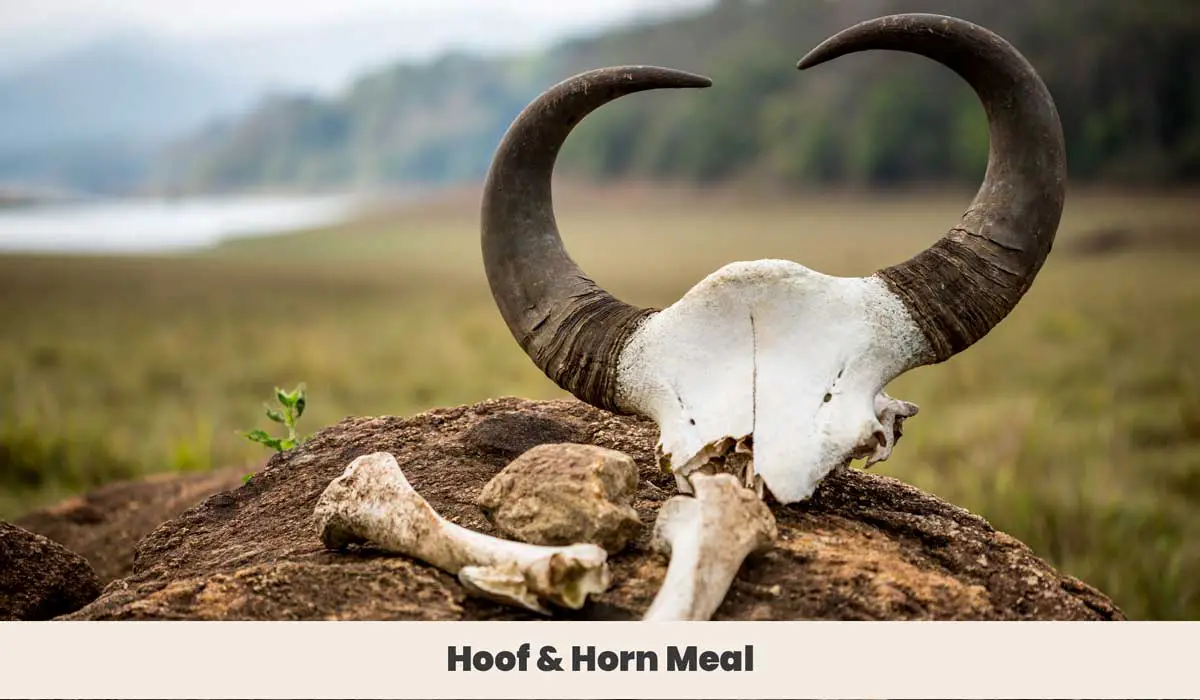
Hoof and horn meal is an organic fertilizer with the highest nitrogen on our list, at around 12-14%. Hoofs and horns taken from slaughterhouses are dried at high temperatures, and then ground into a fine meal. It’s sustainable too, as it reuses waste that would otherwise go to landfill.
2. Feather Meal

Feather meal is another agricultural by-product, this time from the poultry industry. . It’s exactly what it says on the tin – a fine meal made from ground-up and heat-treated feathers. It varies a bit in terms of nutrient profile, but usually has a very high percentage of nitrogen at between 7-12%. It’s also nicely fibrous and adds oxygen too.
3. Blood Meal

High gothic and gory, blood meal is a fantastic high-nitrogen fertilizer. Blood is collected from slaughterhouses and heat treated to kill any pathogens. It’s then dried and milled into a fine rusty powder. It clocks in at around 12% N and is full of iron and protein too. It does have a tendency to attract wildlife, especially raccoons, so apply with caution if you have tiny bandit-faced critters in your area.
4. Bat Guano

Bat guano is a super-rich organic fertilizer that contains all three macro-nutrients, as well as many trace nutrients. It’s not the easiest to use, as it’s both very acidic and so nitrogen rich it’s easy to give your plant root burn if you go overboard. Be sure to check the NPK ratio on the fertilizer package, as some commercial guano is processed to enrich the phosphorus content at the expense of nitrogen.
5. Cotton Seed Meal
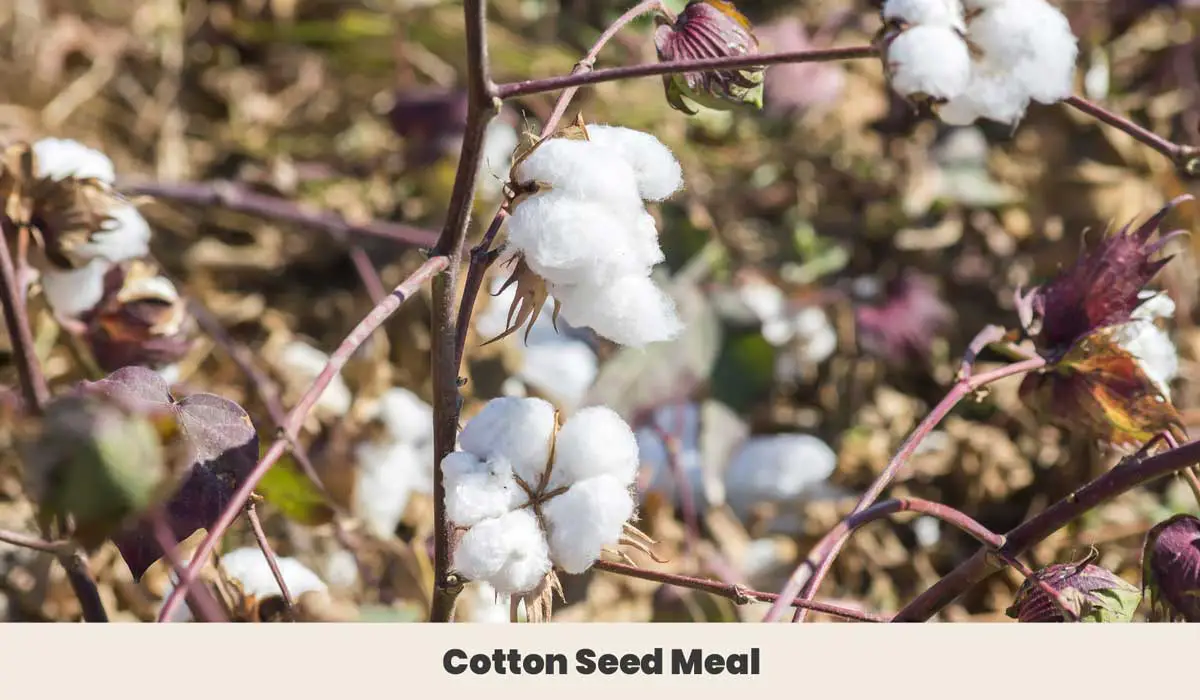
Cotton seed meal is another sustainable option for the home gardener. It’s made from crushed seeds taken from cotton production. This stuff has a good amount of nitrogen, at around 6% by weight. It also has a reasonable 2% phosphorus and potassium, making this type of fertilizer a great all-rounder.
6. Soybean Meal

Soybean meal is another fertilizer with a high nitrogen ratio and a small ecological footprint. It’s made from soybeans, a plant that also fixes nitrogen in the soil as it grows. It’s used as cattle feed, so it’s low-cost and readily available. It has around 5-7% nitrogen and also supplies a modest dose of the other macronutrients too.
7. Fish Emulsion

Fish emulsion is made from the ground-up leftovers produced by the seafood industry. In some locations, this fertilizer comes from pest fish like carp that are deliberately harvested to be turned into fish emulsion. They vary from brand to brand, but most contain around 4% nitrogen. It’s a balanced choice, with a good measure of phosphorus and potassium, and it also comes with a lavish spread of micro-nutrients and proteins.
On the downside fish fertilizers also stink to high heaven, so reserve this one for outdoor use only.
8. Neem Seed Meal

The seeds of the neem tree (Azadirachta indica) are often pressed to extract insecticidal oils. The remaining meal is a balanced source of slow-release nitrogen, phosphorus and potassium, as well as calcium and magnesium. Most remarkably, neem slows denitrification and retains a formidable amount of the seed’s insecticidal properties. This astonishing fertilizer ensures the nitrogen sticks around and gets rid of pests, too!
9. Crab Meal
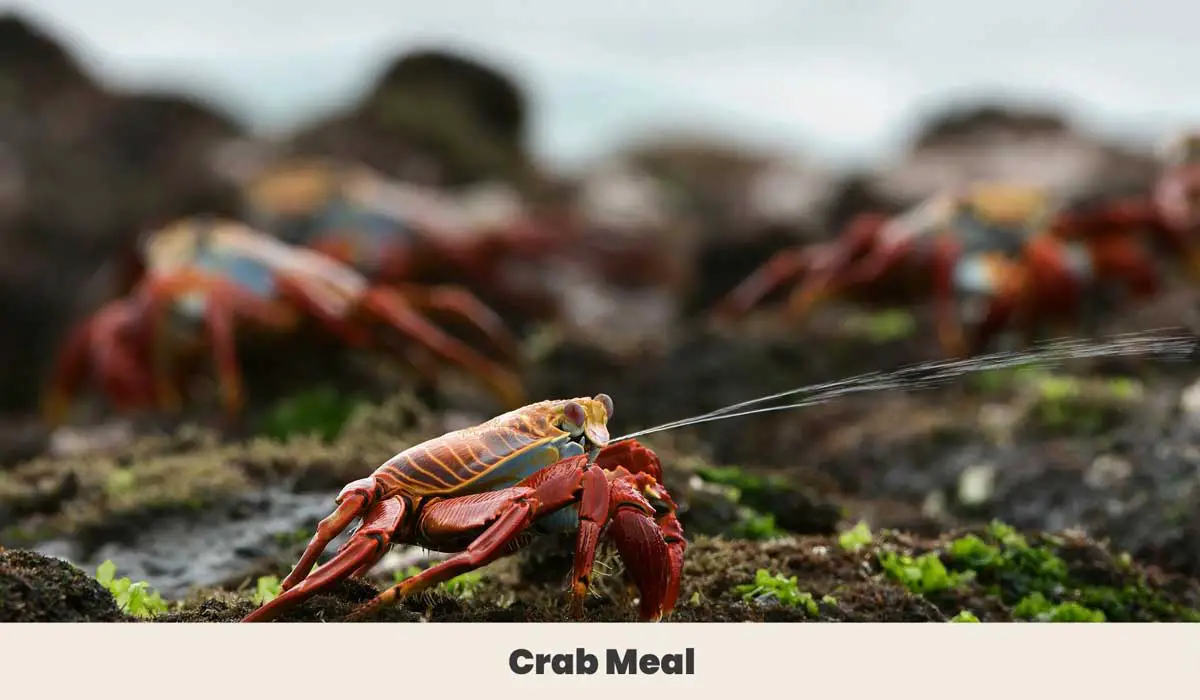
This natural fertilizer is made from the crushed shells of crabs harvested for the plate. It’s slow release and contains a high 13% calcium on top of 4% nitrogen. It’s a good choice for heavy feeding nightshades like peppers and tomatoes. The extra calcium will help ward against Blossom End Rot, while the gentle level of nitrogen will support growth without sacrificing blossoms in favor of leaves.
10. Manure
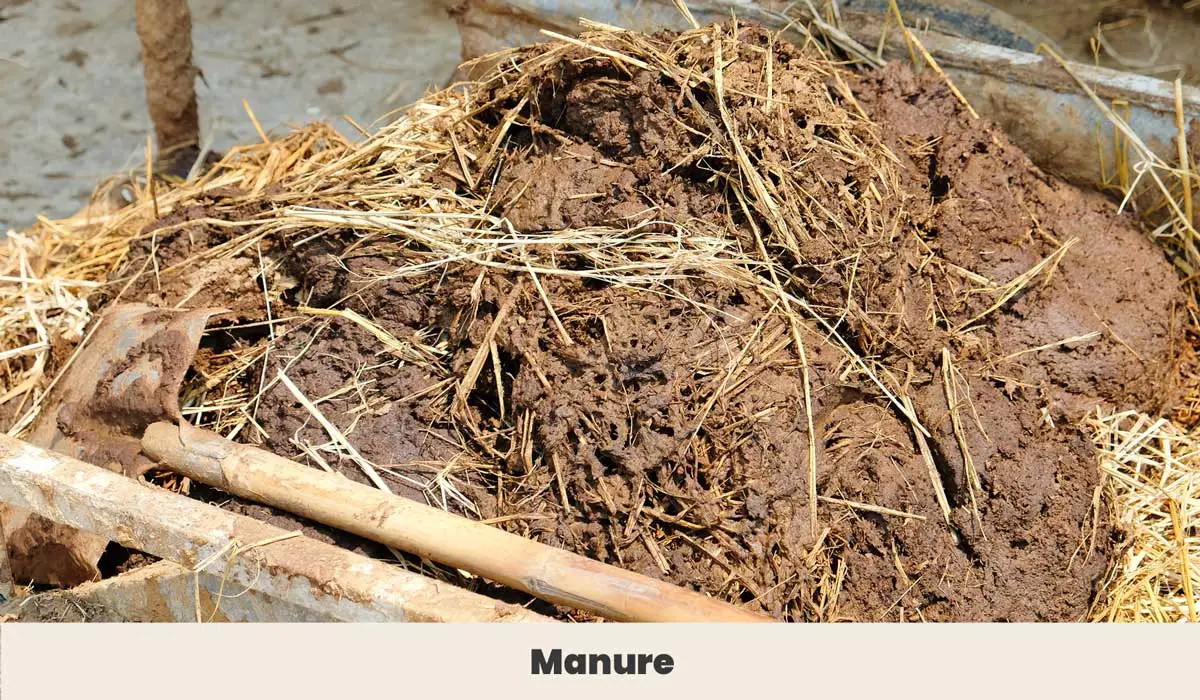
Manure is often one of the first ports of call for environmentally-minded gardeners, but it’s tricky to use effectively. Its nitrogen content varies depending on the type of animal producing it, how old it is, and how it’s been treated. Use very fresh manure from poultry and you’ll get a high-impact fertilizer that’s going to burn your garden, but aged dairy cow manure is as gentle as a spring kiss. Using this fertilizer takes practice but can yield good results as a mulch or when added to compost.
11. Compost

Speaking of compost, I think of it as a cocktail for my garden – what I put into it will change its potency, flavor and how much punch it has.
For a high-nitrogen compost, focus on high-nitrogen ‘green’ waste like natural lawn clippings, manure, fresh leaves, and garden scraps. Adding other high-nitrogen elements like bone meal or guano can give it the same sort of punch without the risk of burning.
When to Use High Nitrogen Fertilizer
When nitrogen is deficient
If your soil test tells you your soil is running low on nitrogen, it’s time to crack out the best nitrogen fertilizer you can get your paws on. What constitutes the best fertilizer will vary a bit – the best lawn fertilizer on the market is going to be inappropriate for a deficient stand of banana trees, for example – but once that test comes in with a low N it’s time to act.
During establishment
Young trees and shrugs do well with a solid dose of fertilizer with an NPK ratio designed to support roots and leaves. A fertilizer with high potassium in addition to lots of nitrogen helps keep plants hydrated and thriving while their roots come in. Fertilizer application directly into the garden bed or as a top dressing immediately after gives the best start for trees, shrubs and other long-lived plants.
Through the growing season
Lawns and leafy plants tear through nitrogen from the soil as the growing season surges on. Each vigorous vine and lush thicket is the testament to that! Topping up with a nitrogen formula as the spring and summer progress will get you to flowers and fruit with minimum fuss.
FAQ
Is high nitrogen good for soil?
What’s good for your soil will depend entirely on what you’re growing. Roses, citrus, palms and fruit trees like bananas love soil chock full of nitrogen. Others like many flowering shrubs and trees find high nitrogen soils hard to endure.
There’s also the problem of runoff. High nitrogen soil leaches the stuff like mad, poisoning drinking water and leading to deadly algae blooms. It really is best to test your soil and only dose as needed.
What happens if there is too much nitrogen?
Too much nitrogen makes plants fragile and sickly. It inhibits the uptake of other nutrients and burns to delicate roots. Damaged roots are extra vulnerable to disease and pests. Established trees and shrubs don’t need very much nitrogen to begin with, too. Many species like cacti and some rainforest specialists have evolved to use very little and can up and die in an overly rich soil.
Even plants that thrive with lots of nitrogen will have issues. They’ll produce overly succulent growth that positively invites sap sucking insects like aphids and scale, and may opt to produce leaves over flowers or fruit.
Will high nitrogen fertilizer kill weeds?
In general, high nitrogen is a gift to weeds. They have the same biology as most other plants and will respond the same way the rest of the garden does to a huge quantities of fertilizer.
That said, you can leverage soil chemistry to use fertilizer as a weed killer. Iron and nitrogen lawn sprays are designed to alter the soil chemistry to favor grass while making conditions hostile to broad leaved plants. This simple lawn treatment can knock out a patch of prickles or clover while being safe for children and pets.

Before you go!
Humic Acid Fertilizer For Plants: A Complete Guide
The Magic Of Cal-mag: What Is Cal-mag And How To Use It
How To Use Rooting Hormones? A complete Guide
What is Kelp Meal and Why You Should Add it to Your Soil